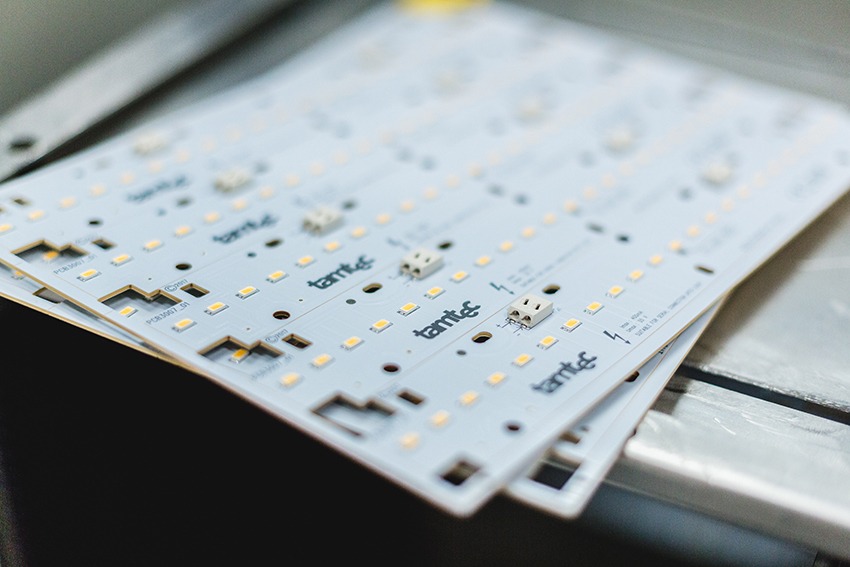
The Tamlite Technical team answers questions about LEDs in their Lux Review.
Most LED light sources are made up of a grouping of LED chips – tiny, intensely bright sources of light that need some kind of optical control so that the fixture works in the way that’s intended.
Diffusers have been with us ever since we first brought light into the home. A diffuser is usually a screen between the light source and the space being lit. As the light enters the diffusing material, the light beams are scattered, resulting in a soft-edged, widely distributed light.
In the case of LEDs, Diffusers are typically made from opalised materials such as acrylic panels, or frosted panels in the case of glass. But we all know of diffusers in the form of fabric shades and paper lanterns.
The purpose of a diffuser is to create a lit environment with minimal shadows. Commonly seen in the home and hotel in decorative fixtures, diffuser panels have recently made an appearance in shops and offices in the form of recessed LED panels. These are typically 600 x 600mm to suit the typical suspended ceiling system, though there are also attractive circular alternatives capable of delivering a commercial lighting performance.

Lenses are a relatively new addition to architectural lighting thanks to the advent of the LED, although they have been in use in stage lighting for many years. Whereas a diffuser spreads light far and wide, the lens is designed to control the light emitting from the LED chips and direct it into a given beam pattern.
Lenses are used in spotlighting, where a distinct beam of light is required. They are also used where light is required to travel a distance before it lights anything; shopping malls, airport terminals, sports stadia, warehouses and factories all have the same requirement for directed light. A diffused light would waste energy because the light would be spread too broadly around the space.
Lenses need to be treated carefully because they deliver light in a specific way. Beam patterns need to be understood before a fixture is selected to ensure that the light pattern achieved is the one that’s wanted.
Whereas diffusers are opalised, lenses are always transparent. This means they need to be made of good-quality material that will not discolour or distort over time, combined with a high-quality LED chip and well-designed optic to reduce colour separation. Lenses are usually made of acrylic, polycarbonate or silicone resin, depending on the qualities required of the lens.